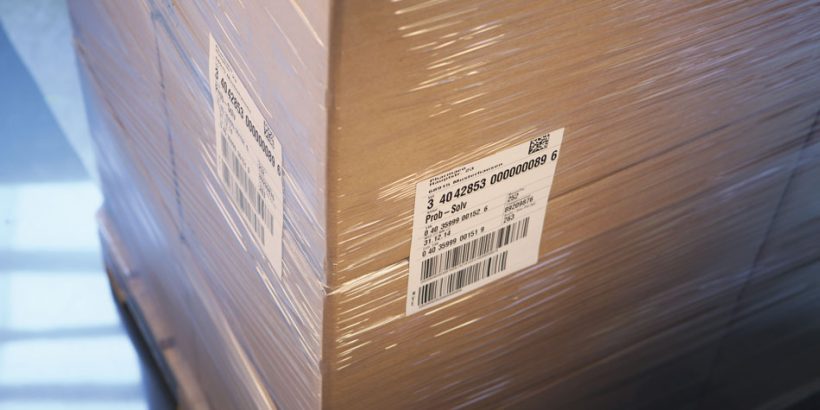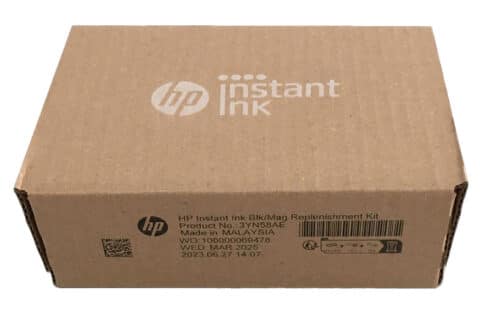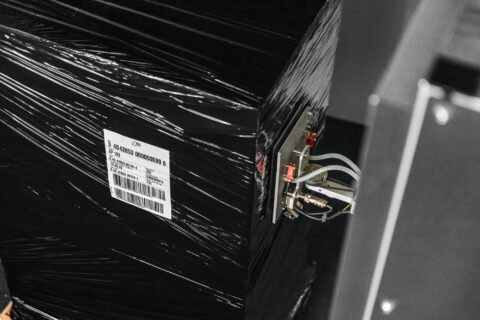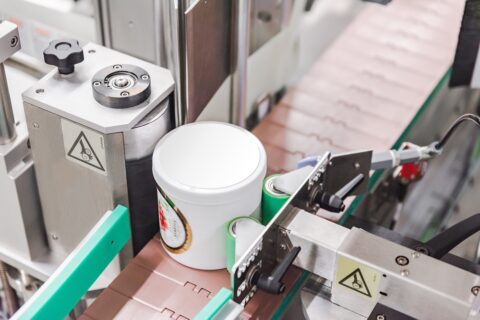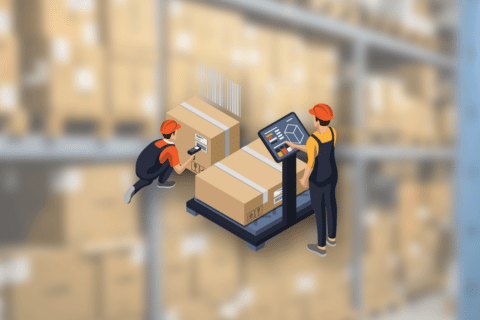In the delivery of goods between industry and trade, countless pallets and cartons are dispatched daily to worldwide destinations. They mostly have a scheduled journey on board of trucks, cargo planes, container ships and freight trains ahead. The goods should arrive at the trading partner not only on time, but also complete and not damaged. Only highly efficient processes in distribution logistics make this incredible performance possible.
 The clear identification of the transport units and their contents is essential for the whole process. Hereby the Serial Shipping Container Code (SSCC) is used. Because it is well proven and standardized globally, many large trading companies require their business partners to use this labeling.
The clear identification of the transport units and their contents is essential for the whole process. Hereby the Serial Shipping Container Code (SSCC) is used. Because it is well proven and standardized globally, many large trading companies require their business partners to use this labeling.
What is the Serial Shipping Container Code (SSCC)?
The SSCC is an 18-digit identification number for shipping units such as pallets, containers or cartons. Each SSCC is fully numeric and is assigned uniquely worldwide. It accompanies the consignment of goods along the entire transport route. This means that the delivery can be tracked seamlessly and can be identified anywhere on its way, starting at the warehouse until it reaches the customer. It is therefore also a mandatory element on the GS1 transport label, where it is shown in plain text and as GS1-128 barcode:

By the way: The SSCC could alternatively be stored in an RFID chip. RFID labeling systems are especially practical if many transport goods are recorded at once without having visual contact with the label reader.
Advantages of marking with SSCC numbers
Companies that use SSCC labels for their shipments benefit in the following ways:
- High customer satisfaction through adherence to delivery dates and smooth order processing
- Avoidance of out-of-stock situations at the customer
- Seamless shipment tracking throughout the entire transport route
- Unique identification of shipping units at any time and any place
- Consistent mobile data acquisition facilitates handling of large volumes of shipments
- Efficient communication with business partners around the world thanks to global standards
Structure of SSCC
The SSCC is built up of different components:
- In the first position there is a reserve digit between 0 and 9 (freely selectable by the SSCC creator).
- The second position is the 7- to 9-digit GS1 base number of the individual Global Location Number (GLN) from the supplying company.
- This is followed by a sequence of digits (consecutive number) assigned by the creator of the SSCC.
- The last digit is a check digit, which prevents incorrect entries.
Create barcode labels with SSCC
To create your SSCC barcode labels you need software that can generate barcodes. This function is usually already included in a professional label software. Herewith you can easily design the label layout and generate the SSCC from a database. Possibly your software can also be used to encode RFID labels.
Tips for correct labeling with SSCC
Follow the instructions for printing and applying the GS1 transport label:
- The SSCC label should be at least 50 mm from the edge of the pallet
- The SSCC barcode should be positioned at least 400 mm and maximum 800 mm above the ground
- The label should stick smoothly on the surface of the package (not under shrink foil!)
- Apply the label on at least one side of the package, ideally on two sides
- Place only one transport label per side of the package
Automatic labelling of pallets and bulk packs, GS1-compliant:

The manual application of labels is not an option for larger companies. The AP 182 pallet labeller from Weber Markeing Systems is specially developed for automatically applying A5 format labels to up to three sides of palletized products or bulk packs. Since it does not require a safety fence or protective enclosure due to its intrinsically safe design, the system reduces costs and workload. Another, particularly flexible and powerful marking technology is pallet labelling by a robot!
- 6 tips for an error-free barcode
- Anti-Counterfeiting: Will Amazon introduce product serialization?
- 5 tips on barcode colours
- Marking packaging alongside the production line
- Inventory with RFID technology
- How variable data labels can boost your business
- Shipping optimization: Improve e-commerce logistics with label automation


